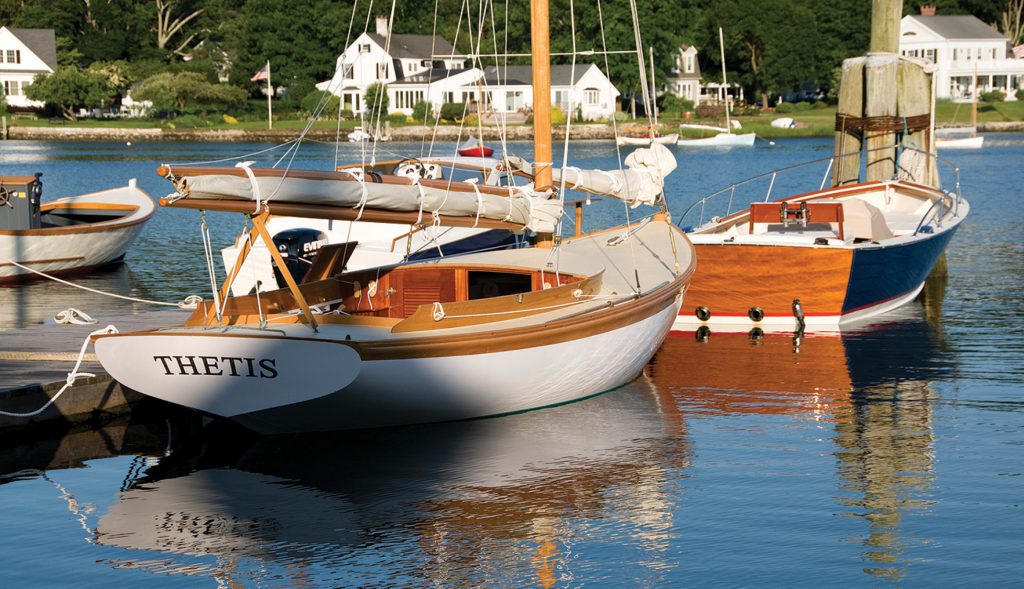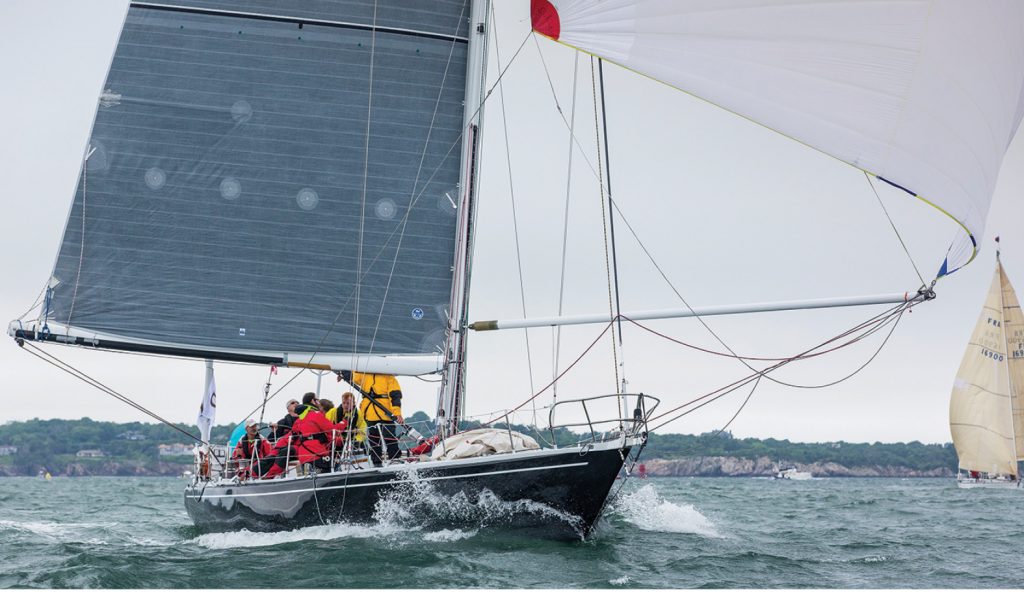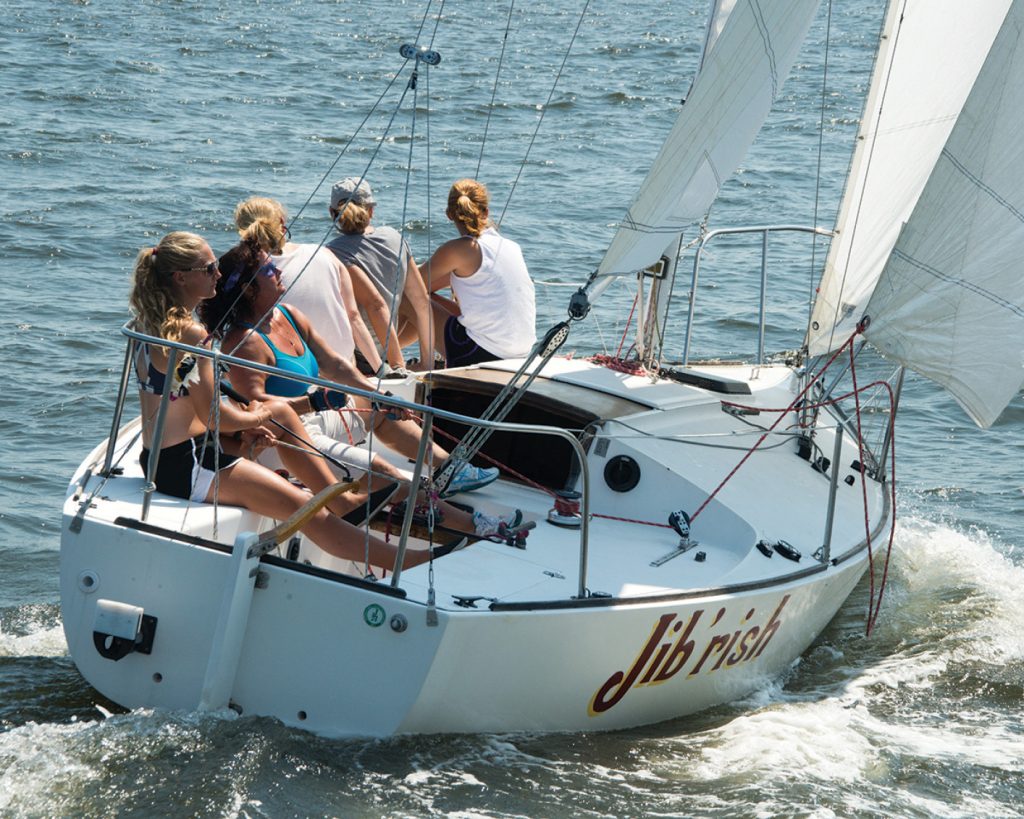Presented by Samson Ropes
Editor’s note: If the lines on your boat are ready for replacement, the variety of marine rope on the market can be bewildering. To help you make the right choices, our friends at Samson, the worldwide leader in high-performance rope, kindly shared these basic guidelines.

In terms of protecting your investment, docklines, mooring lines and anchor ropes are the most important lines on your boat! © WoodenBoatShow.com
Accurately assess your working load.
For sheets, halyards, or control lines, anticipated loads are considered working loads. Please note that halyard loads are best determined by your rigger. The standard working load for any Samson rope is 20% of the rated break strength.
For example, the total load for an end-of-boom mainsheet going through a four-purchase sheave system may be calculated at 900 lbs. Factoring in a 20% working load, the rope’s break strength needs to be five times the working load, or 4,500 lbs. for this application.
Synthetic fibers: What are the differences?
Nylon was the first synthetic fiber widely used in ropes. Reasonably strong (much stronger than the natural fibers it replaced), nylon is still used in dock and anchor lines where its excellent elasticity allows it to absorb shock loads.
The introduction of polyester fiber allowed rope manufacturers to build ropes that were as strong as nylon, but with much less stretch and wet-strength loss. Because it has excellent grip, it works well on winches. Polyester ropes, particularly polyester double braids, became the standard against which all ropes were measured. Polyester is still regarded as an excellent fiber for many marine applications and is widely used for covers on high-performance, or high-modulus double braids.

If you’re crossing an ocean (like Rives Potts’ McCurdy & Rhodes custom 48 Carina, pictured in the Transatlantic Race 2015 and celebrating 50 successful years of racing), you’d better be sure every line on your boat is optimized for its function…and in tip-top condition! © Daniel Forster
High-modulus fibers: Which one, for what, and why?
There are several modern high-modulus fibers, each with a unique set of characteristics. The challenge of the rope designer is to match these characteristics with the unique performance requirements of the application for which they are designing.
Dyneema® is a high modulus polyethylene (HMPE) fiber with a particularly well balanced set of characteristics that allow it to be used in a variety of applications. Extremely lightweight (1/7th that of steel) with ultra-high strength (at least as strong as steel wire at the same size), very low stretch, and excellent abrasion, cut, and UV resistance, it is well-suited for use in halyards, control lines, and sheets.
Other high-modulus fibers include Technora®, an aramid fiber that blends very high strength, low stretch, and abrasion resistance with extreme heat resistance; Vectran®, a liquid crystal polymer (LCP) fiber; and Zylon®, or PBO fiber, which offers the highest strength of all the high-modulus fibers, however, it must be protected from UV light. Technora®, Vectran®, and Zylon® are all exceptionally low-creep fibers.
Double braids and single braids: What’s the difference?
Samson invented the double braid in the late 1950s, when nylon was still the king of synthetic fibers. This construction incorporates a braided core within a braided cover, each carrying an equal percentage of the total load. This type of construction is common to lines that use the more traditional synthetic fibers like polyester, olefin, and nylon. In addition to carrying up to one-half of the load, the cover serves to protect the core from abrasion or ultraviolet degradation, to provide grip on winches or in clutches and stoppers, and to provide protection from friction- generated heat.
For applications that require higher strength and lighter weight than traditional Class I fibers provide, you will look to a core-dependent double braid. In this construction, the core is made from Class II fibers and serves as the strength member while the cover is typically made of Class I fibers.
Single braids are ropes designed without a separate core. Samson manufactures a wide variety of single braids. For sailing applications, the most common single braid is a strand line. Where necessary or desired, covers can be added to single braids to protect them from exposure to heat, abrasion, or cutting while in use. Alternately, you may opt to strip the cover from a double braid in order to save additional weight aloft for halyard applications. The cover remains intact in areas on the rope where the rope is cleated or winched.

Whether you’re cruising, daysailing or racing (like this J/24 helmed by Brittney Slook in Atlantic Highlands Yacht Club’s annual Ms. Race), the right ropes will make sailing safer, easier, and more fun. © Jeff Smith
Class I and Class II ropes: What are they?
Samson ropes are classified into two main categories based on fiber type. Ropes manufactured using the traditional fibers of nylon, polyester, and olefin are categorized as Class I. Those ropes made in whole or in part with any of the high-modulus fibers such as Dyneema®, Technora®, or Vectran® are categorized as Class II.
Splicing techniques: Why is knowing the class of my line important?
Splicing techniques are different between Class I and Class II ropes and reflect the differences in strengths and grip between the two groups. It is absolutely critical to use the correct splice for the class of rope being used. The product specifications from Samson include rope construction, class, and recommended splicing technique.
Dock & Anchor Lines
On most boats, the most frequently used lines aboard are the dock and anchor lines. It’s a fact of boating life that, for most of us, our boats spend more time moored than underway. Protect your investment and give yourself a little peace of mind by ensuring that you’ve got the best dock and anchor lines available, and be sure to replace them before they start looking frayed. To learn more, log onto SamsonRope.com.




